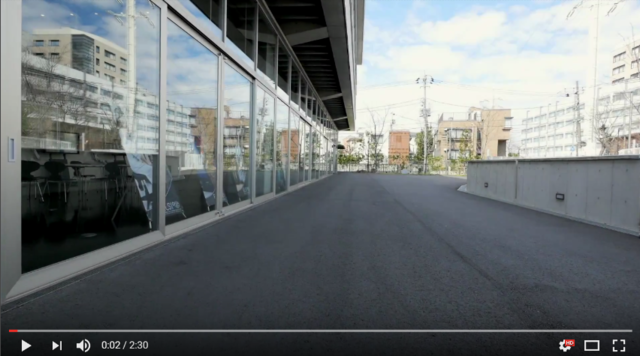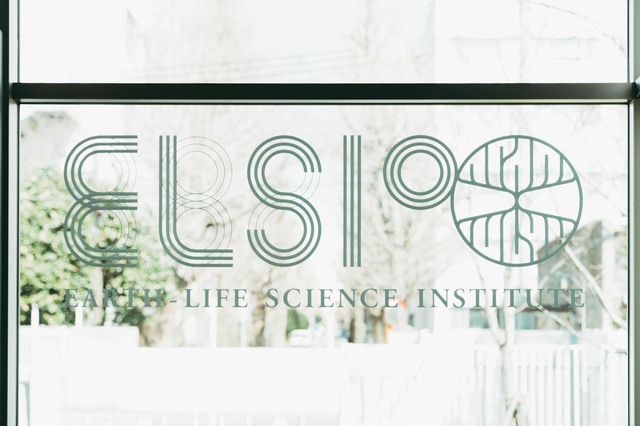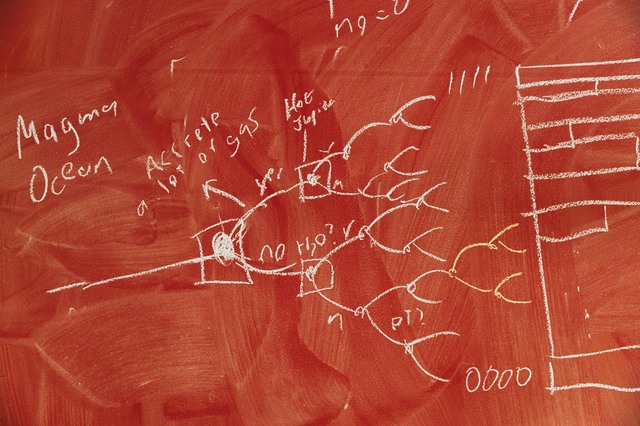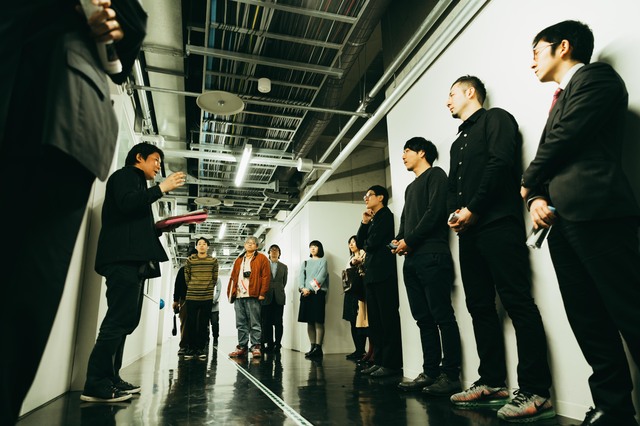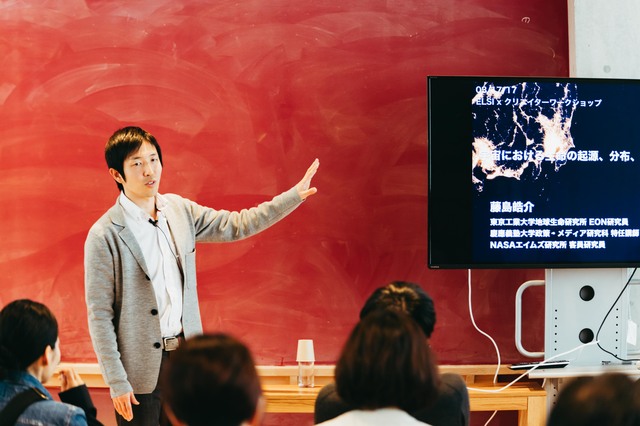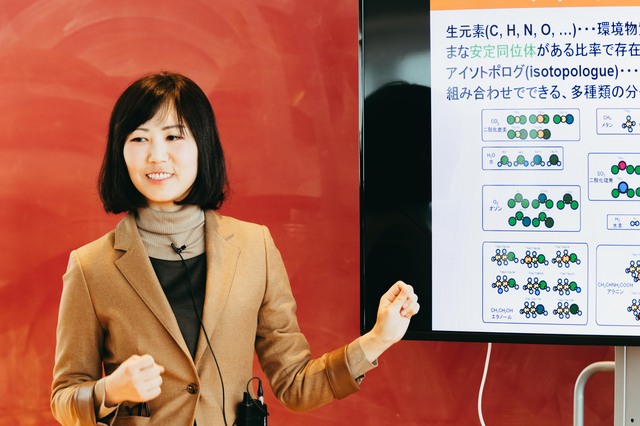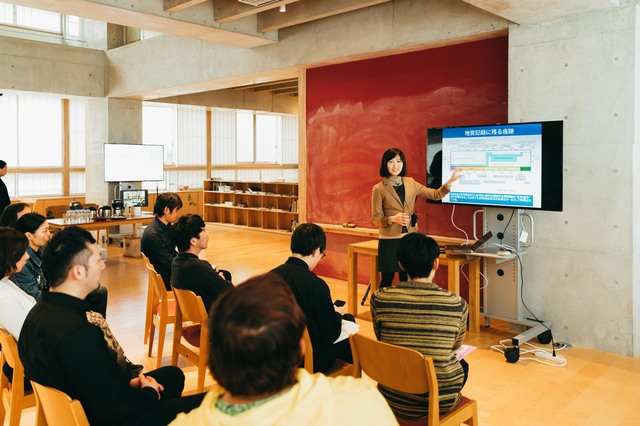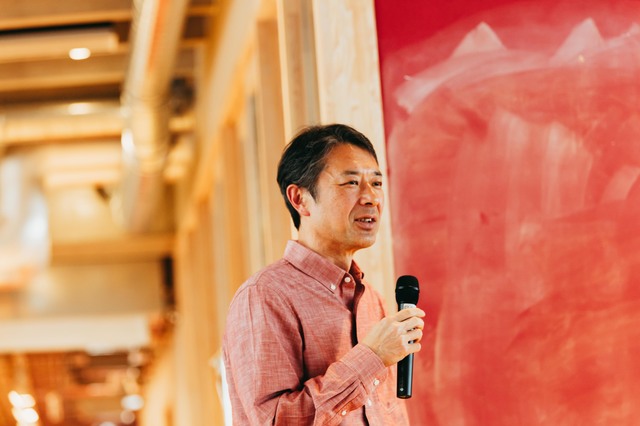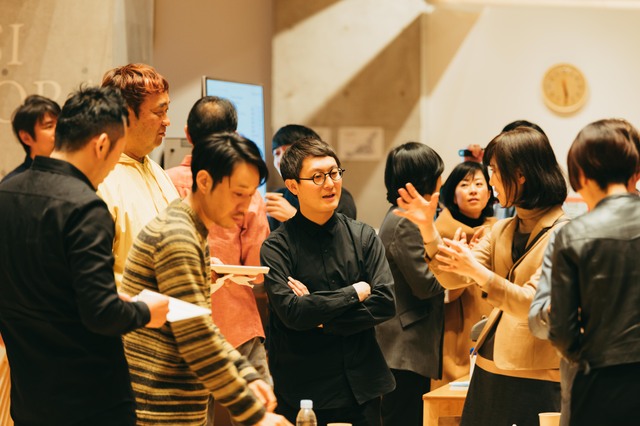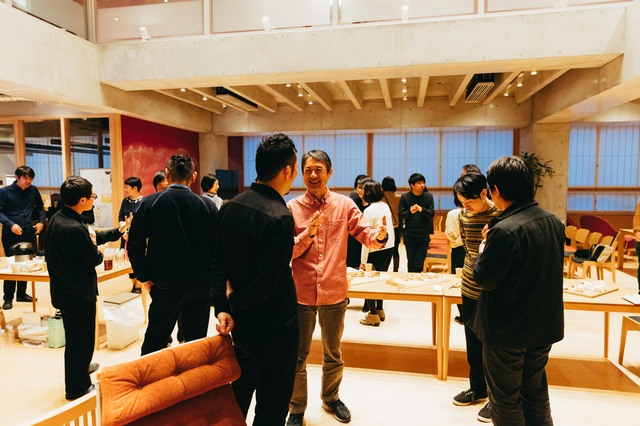Event
Implementation Report on the ELSI "Creators Meet Scientists (CMS)" Project Kick-off Workshop (Mar.17)
The collaboration project called the "ELSI 'Creators Meet Scientists (CMS)' Project" by Earth-Life Science Institute (ELSI) researchers and creators has officially started. Video creator Mitsunori Sakano was asked to produce a short video about the kick-off workshop held on March 17th.
Writer Ryo Hasegawa was asked to write a detailed report about the workshop.
The collaboration project known as the "ELSI 'Creators Meet Scientists (CMS)' Project" consisting of researchers belonging to the Tokyo Institute of Technology's Earth-Life Science Institute (ELSI) as well as other creators kicked off on March 17, 2017. There have been many collaborations between science and art, but it is not easy for both sides to bear fruit in both forms. This project aims to achieve this and to jointly create new values and innovations for society. At the kick-off workshop held on the 17th, three researchers from ELSI made presentations on their research topics to creators gathered at the venue. This article will give an overview of this workshop.
Collaboration Project by Earth Life Scientists & Creators Begins
The Tokyo Institute of Technology Earth-Life Science Institute (ELSI) (hereafter referred to as ELSI) has taken up a grand research theme-"Exploring the origins of the earth and the life on it at the same time." This theme, which is one of the most universal subjects for mankind, broadly stimulates the intellectual curiosity not only of researchers but in all of us. However, the hurdle for understanding cutting edge research is not low at present. Because we have few opportunities to view academic presentations and papers in the first place, and many of the contents are described using technical terms and mathematical expressions, there seems to be a large gap between us ordinary people and the most advanced research.
In the research by ELSI, hypotheses on "origins" from the past will be verified by each researcher's approach. Each of the research processes deals with objective facts and numerical data, so it can be widely categorized as "science," but regarding the method for understanding and interpreting those results, for finding the value between these results and other results, and the method for proceeding with research, it can be said that each researcher has his or her own "story" to tell. Therefore, instead of the conventional method of closed output in an academic setting as in the past, the "ELSI 'Creators Meet Scientists (CMS)' Project" was started with the concept of telling "scientists' stories" through collaboration with creators, whose work involves "expression" in various fields.
In this project, the whole collaborative process starting with this event held as a kick-off workshop (presentations by researchers) through to the actual output (planned for February to March, 2018) will be disclosed and will be shared widely with many people. It is an attempt to produce a new form of creative "science and art" that uses the creation process of expression and communication for collaboration as the message itself.
At this workshop, Kosuke Fujishima, who is active in the field of space biology and who has attracted much attention from various media, Mayuko Nakagawa, who is verifying a hypothesis on the origin of life using the powerful tool of "isotopes," and Shigeru Ida, who is a leading expert in the field of planet formation theory, each introduced their research contents. To listen to these presentations, nine creators active in various fields such as music, art, stage expression, video, product design, architecture, and games were gathered.
Okuda Satoshi (Stage expression, Condors)
Tamaki ROY (Rapper, musician)
Tetsuya Mizuguchi (Game designer)
KYOTARO (Drawing artist)
Mitsunori Sakano (Video creator)
Kosho Tsuboi (Product designer)
Shizuka Tatsuno (Product designer)
Akinori Hamada (Architect, Aki Hamada Architects, Team Labo)
Fumihiko Sano (Architect/Artist)
Kosuke Fujishima "The Story of the Origin, Distribution, and Future of Life in the Universe"
The first presentation was done by astrobiology researcher Kosuke Fujishima based on the theme, "The Story of the Origin, Distribution, and Future of Life in the Universe." In addition to ELSI, he is also a visiting researcher at NASA's Ames Research Center in America's Silicon Valley. In his presentation, he discussed three themes; (1) the origin of life (When, where, and how did life of the earth begin?), (2) the distribution of life (the possibility of life existing outside the earth), and (3) the future of mankind (How far can we humans extend the biosphere?).
What do you imagine when you hear the number "199,341,377"? Actually, this is the number of sequences registered in the database as genetic information as of February 2017. In other words, approximately 200 million potentially useful genes have been archived. This means that when our life goes out to other planets in the future, it will be possible to acquire many technologies on Earth to support it. "We will mobilize and utilize the gene functions cultivated in the 3.8 to 4 billion years of life's evolution history. Human space advancement needs to be supported by 'Whole Earth Life'." (Fujishima)
According to Mr. Fujishima, in order to trace the origin of life, it is necessary to understand the early earth environment and to understand what kind of chemical reactions gave birth to life. It is a concept of molecular biology called "central dogma" that introduces the universal rules of life using the phylogenetic tree of life. "Central dogma" asserts that the seeming diversity of life is in accordance with the universal rule that genetic information is transmitted in the direction of "DNA → (transcription) → mRNA → (translation) → protein." What is interesting is that our ancestors already had this complex system over 3 billion years ago. He explained that life on Earth began "when the transition from the geochemical process to chemical reaction by organic polymer in the membrane system was completed."
His last theme was "The Search for Life Outside the Earth." Mr. Fujishima cited water as a condition for candidate sites. As an example, he mentioned Jupiter's moon "Europa" and Saturn's moon "Enceladus." He explained that it is necessary to search for a polymer that is a polymeric organic matter as an index for confirming locations where life can start to exist. In this search, it seems that technical ingenuity is still required to capture the organic matter without destroying it.
Mayuko Nakagawa "Life's Fingerprint -Stable Isotope Fractionation-"
The next speaker was Mayuko Nakagawa, who specializes in global biochemistry and is conducting research to verify a hypothesis on the origin of life. She uses stable isotope ratios as a research tool to take "life's fingerprint." In order to know what kind of biological activity and what kind of environment existed through old geological records where DNA and other things have decomposed, it is necessary to extract the information from the elements and atoms themselves. According to her, analysis based on stable isotopic ratios is useful when analyzing resource renewal in such environments.
A stable isotope is one of the same elements but with a different mass, and these are found in elements such as carbon and hydrogen. Although the abundance ratio (stable isotope ratio) of stable isotopes changes slightly due to temperature, biological activity, etc., the difference is unclear with direct isotope ratios, so the difference when compared with the isotope ratio of substances called "international standard substances" is used. The difference from the standard, whether heavier or lighter, is expressed as the "delta value." There are various analysis methods depending on the target compound and element, and various pretreatment equipment is used depending on the sample being handled in order to make a compound containing the element being analyzed into a gas.
There are two kinds of phenomena (isotope effects) that change the stable isotopic ratio. One is called "kinetic isotope fractionation," and it is defined by the reaction rate constant. She gave a unique descriptive explanation saying, "light isotopes react faster similar to how a thin, muscular person can immediately begin to run, whereas it is more difficult for an overweight person even when they both take in the same nutritional jelly." The other is "equilibrium isotope fractionation," and this is defined by an equilibrium constant such as temperature and phase change.
She stated that by measuring the stable isotope ratio, it is possible to obtain three kinds of information; (1) origin information, (2) generation / decomposition reaction information, and (3) physical information. By adding the isotope ratio information to the concentration information of the target compound, it is possible to clarify the generation process at the time when the compound concentration changed, and to retroactively find out how the origin of the compound is contributing to the current state.
The following research procedure at ELSI for certifying the fingerprint of life was shown. Samples are taken from the old geological formation and then the target components are extracted and purified. Next, these are compared with the isotope ratio database based on the physical reaction expected from the environmental conditions at that time, in the modern ecosystem, and the chemical information of each microorganism, and it is analyzed to determine how the target component is generated and by what kind of biological/non-biological reaction. She would like to development new indices and analysis methods to further reduce unknowns at the time of analysis and improve accuracy.
Shigeru Ida "Second Earth, Earths, and Habitable Planets"
Last to speak was Mr. Shigeru Ida, who studies planet formation theory, exoplanetary systems and solar systems, and who is the vice director of ELSI. He talked about "Second Earth, Earths, and Habitable Planets." "Trappist-1" is an M-type star with a solar mass of 0.08, and it is famous because of the discovery of seven Earth-sized planets announced by NASA on February 23rd. Three of these have been topics recently due to their being "Habitable (can sustain life)." Another thing that Mr. Ida introduced at the beginning was "Proxima Centauri," a planet discovered last year. This is a fixed star just next to our solar system.
Mr. Ida explained to the creators the framework of thinking that science is roughly divided into two groups, "science of the sky" and "science of I." Although astronomy and physics are academic studies of science, these are strongly connected with human psychologies such as "fear of infinity and singularity" and "release from self-(earth)-centered principles." In addition, he explained that, of course, with science, analysis proceeds through the accumulating of objective and empirical data, but the way of looking at the results and thinking based on that stimulation are part of the human mind. Especially when it comes to the study of extraterrestrial lifeforms, the fact is that not only the general public but also researchers themselves cannot avoid trembling-this is the interesting and difficult part, he explained.
"What is happening at the edge of the universe?" He is often asked this kind of question, but he said that current observation data clearly shows that "since it continues infinitely, there is no edge."
According to him, as technology has advanced in recent years, observations and discoveries are continuing with momentum. Up to about 20 years ago, "only the solar system" was known as a planetary system like our solar system, but now thousands of planetary systems are being observed. For a long time, only one example existed, but now it is well known that there are countless, so research methods have changed drastically. When there is only one, it would have been enough to use only that as a base, but when variations increase, it becomes necessary to unlearn traditional ways of thinking and biases (leaving behind what you once learned). In other words, there is a need to stop using common adjectives such as "unique" when talking about our solar system, and "miraculous and blessed planet" when discussing the Earth.
Here, the topic that science should be distinguished and understood comes up again. In other words, one is a type of science that connects to "I," and this corresponds to biology, medicine, brain science, conventional earth sciences, etc. On the other hand, theories of cosmology and elementary particles are sciences of the "sky." The Higgs particle, which is a recent popular scientific topic, must be another side science. However, regarding exoplanets, it can be said that both are mixed. Mr. Ida pointed out that this is why the title of Gauguin's famous painting , "Where Do We Come From? What Are We? Where Are We Going?" are frequently quoted. Certainly, the intersection of these two positions creates confusion, but that is why there are aspects that make research subjects fun and enriching. Therefore, Mr. Ida said that it is important to distinguish between the two.
Salon for exploring the possibility of collaboration and deepening input
Salon (exchange meeting) conducted by creators and researchers after presentations by three researchers. While exploring the possibilities of collaboration, creators deepened input by asking researchers questions about their presentations.
Participating creators made the following comments about their expectations related to their creative works.
"It was a wonderful opportunity. I was thrilled and excited. I will deepen my thinking so that I can make good expressions."
"I thought that the confusion on the side of the artists was actually a good thing. It is a very interesting project, and many ideas are coming up."
"From my perspective, it was a little too technical, so there were many things I could not understand, but I could feel the passion of the researchers. I am looking forward to the kinds of expressions that will come."
Today was the first workshop and it was mainly an input for creators, which is the first step in the creative process. While continuing to deepen further communication in the future, it is expected that the contours of their works will become more and more visible each time.
From next time, creators will give presentations (June), then researchers and creators will be matched together (July), there will be presentations of works by creators (September to November), there will be collaborative productions (until February 2018), and finally, the start of an exhibition (from March 2018).
Hasegawa Ryo (Writer/Edit)













